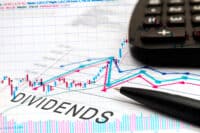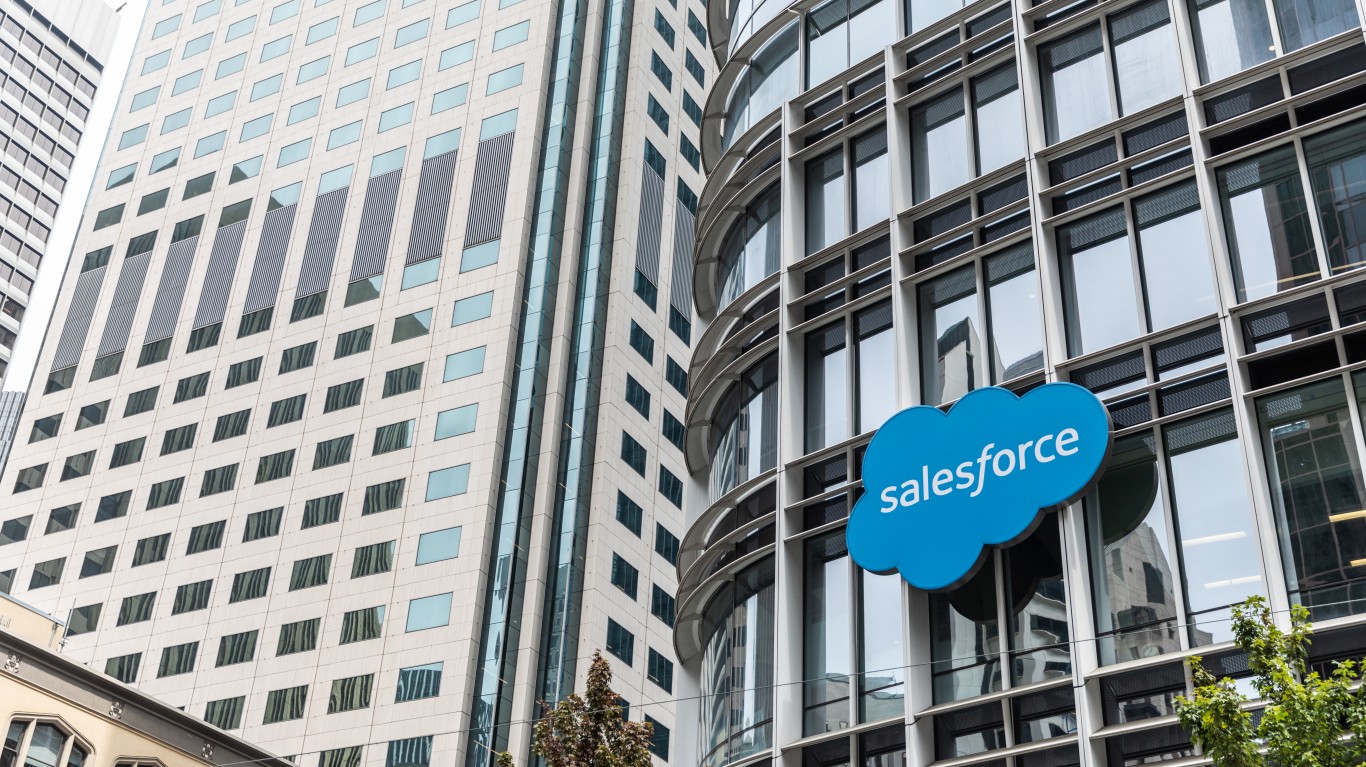 The recent weakness in stocks could just be the start of what to expect in the weeks ahead. It is early May and already we have seen the Dow Jones Industrial Average close down at 12,723.58 after peaking at 12,928 and closing at a high of 12,810… There is a chance that the markets could be setting up for another 10% pullback. For starters, this would put the DJIA down at 11,529 to 11,635. Sound extreme? The DJIA closed out 2010 at 11,577.51, so a 10% correction would hardly dent the market’s performance in 2010.
The recent weakness in stocks could just be the start of what to expect in the weeks ahead. It is early May and already we have seen the Dow Jones Industrial Average close down at 12,723.58 after peaking at 12,928 and closing at a high of 12,810… There is a chance that the markets could be setting up for another 10% pullback. For starters, this would put the DJIA down at 11,529 to 11,635. Sound extreme? The DJIA closed out 2010 at 11,577.51, so a 10% correction would hardly dent the market’s performance in 2010.
If we were to use the same calculation for a 10% correction from the high point and the high close of the S&P 500 Index we’d get a range of about 1,227 to 1,233. The S&P 500 Index closed out 2010 at 1,257.64 and Wednesday’s close was 1,347.42. Suddenly, a 10% correction doesn’t sound so damaging after the markets have roughly doubled from the peak of the early 2009 selling.
We have focused on ten key points that may derail the stock market rally. A pullback of any size could easily reach 10%, and it might not even matter all that much in the long-term. It might even be yet another buying opportunity for long-term investors seeking value. Call this “Ten Reasons for a Ten Percent Correction”…
First off, SELL IN MAY AND GO AWAY!… There has long-been a saying of “Sell in May, and go away.” The calendar is against the stock market. As summer nears, many businesses see their businesses slow. Summer is also when investors are taking their longer vacations and can be out for one week or even two weeks (or longer in Europe). This all leads to thin trading volume and a general disinterest in stocks. Trading volume was already slow this year before summer has even started. Just go back one year and you had the DJIA drop from a peak of about 11,200 in May on the heels of a large rally to a low of just under 9,600 in July. It was also in May of 2010 that the Flash Crash came about. Just this week came word from Doug Cliggott, equity strategist at Credit Suisse, that we could see a 10% correction this summer even if he raised his price target objective on the S&P 500 Index to 1275 from 1250 for year-end.
Precious Metals… Gold was the old darling in 2010, but then it was replaced by silver in 2011. Many investors and speculators became enthralled with the devil’s metal as they bet on the death of paper money and to hedge against inflation and uncertainty. Last week silver peaked above $48.00, and the calls became crazy enough that we even saw “$80 silver” predicted. But silver was back under $39.00 per ounce by mid-week. The iShares Silver Trust (NYSE: SLV) fell about $10.00 right after trading volume on the way up reached historic highs. The losses and margin calls here in silver have probably created a few orphans and widows in the trading circles. The drop in silver is a good thing for the economy, but this is just one more damaging move for the nervous speculators. Those who might have rotated into equities may be forced to seek the safety of the boring bond market.
Topping Out or Stalling…The stock market and many of the key leading companies you would expect to lead the market have seen a stalling out as we led up to May. In fact, these have been a dull three months if you just measure gains. Market leaders like Apple Inc. (NASDAQ: AAPL), JPMorgan Chase & Co. (NYSE: JPM), and General Electric Co. (NYSE: GE) had all risen steadily up until the last ninety days or so. Now it is food, consumer products, and utilities hitting 52-week highs. It is hardly fair to assume that a bunch of defensive stocks will drive the broader stock market higher. The DJIA acted like it was topping out when it hit 12,800 in late April and the trading action shown in the “Sell in May…” comes right back to mind.
Market Confidence… Investors remain concerned about the integrity of the stock market. Many feel that the stock market is rigged with Goldman Sachs Group Inc. (NYSE: GS) and others knowing how to make money at your expense. There is still a lack of confidence about the integrity of the system, understandably so. While the Raj Rajaratnam insider trading case is embarrassing for regulators and while the Bernie Madoff case is outright infuriating, the latest trading scandal with Berkshire Hathaway Inc. (NYSE: BRK-A) is just another psychological blow to the integrity of the stock market. If the great Warren Buffett is getting duped into believing what his cronies are telling him about companies and he is still drinking the punch, how does the retail investor class know when they are being duped? The little investor has so far not participated as much as the broad market recovery, and that group of investors may not be back in the market if any more confidence issues arise. The first anniversary of the Flash Crash is just one more reminder and many feel that the same thing can occur again. It is possible that the recession might have even removed an entire generation of investors from wanting to invest in the stock market.
Bonds & Interest Rates… Long-term interest rates have challenged the notion that the end of quantitative easing this summer will kill the bond market. The 30-year Treasury yield peaked between 4.70% and 4.80% this February, but those yields went out at a near-term low of 4.33% mid-week. That was the lowest yield since December. The 10-Year Treasury note peaked at about 3.60% in early-March and in mid-April, but that yield went out mid-week at 3.22% as the lowest yield since mid-March. Bond yields have come down because the economic data is just not supporting as steady of an economic growth cycle. It was just last week that Ben Bernanke and the FOMC were already downgrading the recovery and then even lowering expectations for the growth and employment situation ahead. Even the Standard & Poor’s warning that the U.S. could lose its “AAA” rating failed to drive bond yields remarkably higher. Lower bond yields without change in economic policies generally indicate economic softening, and that softening is not a good sign for equities.
Inflation and Oil… Some will address oil and energy differently from overall inflation, but there is an old theory that it is the cost of energy that ultimately drives inflation. What is the largest cost component of many consumer goods? The transportation costs of getting the goods from the first starting point to the end markets depend largely upon the price of oil and gas. Almost nobody is getting gasoline for under $4.00 now and it is becoming commonplace to hear company after company warn in the conference calls that they are going to have to pass on higher costs. The cost of many key consumer products is seeing evidence of higher prices for the consumer. The inflationary component of the first quarter GDP just came out a week ago showing that the headline GDP data was less than 2% but that the PCE measurement of the prices rose more than it had in over two years to 3.8%. Many argue that inflation is already here, whether Bernanke wants to call its “transitory” or not. If the rising strife in Middle East and North Africa spreads to Saudi Arabia or more key oil producers, the supply disruption could send oil far higher than the $110+ in the U.S. and the $120 prices seen in Brent Sea crude would suddenly look cheap.
Unemployment and Jobs… The official unemployment rate has come down far faster than many truly believe, and the major culprit for this is that many of the officially unemployed have now been unemployed for so long that they have literally dropped out of the workforce. It was for several weeks that weekly jobless claims were coming in at levels under 400,000 per week, but that changed in April and it is uncertain about whether that will remain. The market is expecting that unemployment will remain flat at 8.8% for April with non-farm payrolls (job creation) expanding by about 200,000. That has to get closer to 300,000 before it really creates a net win for the economy. Just last week in Bernanke’s first post-FOMC testimony came the note that we are still about 7+ million jobs short of where we were before the recession started. At the current pace, we are years away from reaching full employment again.
Volatility and Sentiment… Up until this week, the Volatility Index or the VIX was reaching extreme lows after getting under 15.0. Rather than measuring volatility, it was screaming that “complacency” was the mood of the market. It will take more than this little selling we have seen so far this week to rapidly change the VIX as the level is now still low around 17.0. Those investors who have participated in the market remain more bullish than bearish, which is often used as a reverse-indicator. Investors are cheering that earnings season has generally gone better than expected, but the slowing GDP and the economic downgrades by the FOMC imply that the true “beating of earnings and raising or maintaining guidance” may be due to formal earnings estimates from analysts simply being too low. There is an investing philosophy of being a “contrarian” and that implies that when all the market participants want to buy it means that it is time to start selling.
International Markets, Central Banks, and Austerity… Certainly you have heard of the interest rate hikes and tighter monetary policies coming out of China and India, and now even out of Europe. These central banks have decided that fighting inflation has become more important than continuing to support growth. Maybe 6% growth in those markets will have to be enough. If that tightening continues, a hard economic landing could easily come about. The European Central Bank has now started hiking rates at the same time that Portugal, Greece, and Ireland are all running deep in the red. Raising rates because times are good implies that the economy is overheating. Raising rates and raising lending standards at such a fast rate to counter inflation is another thing entirely. Dare we mention austerity? Government spending cuts are coming in all markets, like it or not. Did you notice how government spending was down so much in the latest GDP reading? Get used to that as budget cuts continue, and that means that less contract money is being thrown around to fuel economic growth. That will be a global trend, possibly for years and years.
King Dollar… The U.S. Dollar has virtually become the Peso. That “Strong Dollar Policy” from the Federal Reserve and the Treasury is fiction. The dollar has lost ground against enough currencies that New Yorkers could face an influx of Somali tourists because it is so cheap to come visit America. Our own purchasing power parity overseas is so low that it is almost embarrassing. The good news is that a low-valued dollar does drive up US exports. But what if that is about to change? A rising dollar could actually derail the export growth and possibly derail the recovery. Now that the Euro is back to almost $1.50 and now that you barely get 80 yen to the dollar, it is possible that currency buyers will start speculating that the dollar slide has been too much against historic levels. More importantly, when the Federal Reserve looks closer to finally hiking rates you will see a rush of dollar buying internationally as money chases higher relative short-term interest rates.
As you can tell, there are many risks that await investors. We didn’t even address the near closing down of the Japanese economy after its earthquake and nuclear meltdown woes. The drop in the price of base metals in recent days differs from the drop of the price in precious metals because the base metals are required by all of those emerging markets to keep growing. We hardly noted the risks of rebellion in many nations as you have seen in the news. Emerging markets have also been weak, an omen… The BSE 30 in India has fallen about 6% and the Shanghai Composite in China slid almost 5% in just over the last week. We also did not even mention the weak housing market once, but that remains a dismal topic. Maybe the boost in confidence after the killing of Osama Bin Laden will help, although from the start we cautioned that it would matter little to the markets.
So, there are risks… Would a 10% correction be the end of the world? Probably not. It might just finally bring in more of those buyers who have waited or avoiding stocks as well. Corporate balance sheets remain at extremely strong readings. The Federal Reserve is still adding liquidity to the markets for now. We are also in a far better spot than we were in just two years ago. Maybe we get a 10% correction, maybe not. Some investors would actually welcome a 10% correction.
JON C. OGG
The Average American Is Losing Momentum On Their Savings Every Day (Sponsor)
If you’re like many Americans and keep your money ‘safe’ in a checking or savings account, think again. The average yield on a savings account is a paltry .4%1 today. Checking accounts are even worse.
But there is good news. To win qualified customers, some accounts are paying more than 7x the national average. That’s an incredible way to keep your money safe and earn more at the same time. Our top pick for high yield savings accounts includes other benefits as well. You can earn a $200 bonus and up to 7X the national average with qualifying deposits. Terms apply. Member, FDIC.
Click here to see how much more you could be earning on your savings today. It takes just a few minutes to open an account to make your money work for you.
Thank you for reading! Have some feedback for us?
Contact the 24/7 Wall St. editorial team.





